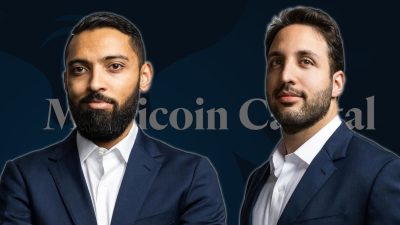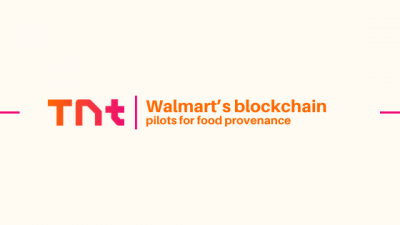Before politics and global controversy, Donald Trump built something few recognized in real time: a media-powered persona. His name circulated in print, on television, and across business magazines well before any campaign. The strategy was direct. Capture attention. Shape the story. Let perception do the heavy lifting.
Coverage of his properties, his deals, and his personality turned into fuel. He understood instinctively that scale could be signaled before it was proven. When The Apprentice later reached millions of viewers, the perception of power and success became even harder to separate from the man himself. Whether one admired or disliked him, the attention was constant.
That same dynamic drives visibility today, and it extends well beyond moguls. Entrepreneurs and executives are learning that authority in modern markets rarely develops quietly. Customers, investors, and even potential hires want a sense of credibility before they engage. And that credibility now lives in public, searchable form.
Every opportunity begins with a search. The instant someone hears a name, they check what shows up online. Those results decide what happens next. Whether the moment involves an investor meeting, a potential hire, or a partnership, the digital record sets the tone before any conversation begins. A polished website is not enough. What matters is what appears when someone types a name into Google.
For ambitious founders, this reality creates both a risk and an opportunity. Risk, because silence online signals obscurity or irrelevance. Opportunity, because a deliberate footprint can create the impression of momentum before a company has even scaled.
PR Firms such as UpTier Agency have built systems to turn this into an advantage. Media footprints become infrastructure. Articles, interviews, and profiles are arranged to ensure presence in search, creating a trail of credibility that works on demand. These placements are designed as assets, compressing the distance between discovery and trust.
Consider the difference between two founders approaching investors. One has little beyond a LinkedIn profile. The other has published insights in respected outlets, a feature interview in a trade publication, and their name consistently tied to industry trends. Both may have comparable businesses. Yet the second appears more established, more credible, and therefore more investable. The perception precedes the pitch.
Trump’s ventures thrived on constant attention. Coverage created perceived scale, and that perception attracted real investment. The same principle now fuels a repeatable process: curated interviews, authored features, and precise placements that put leaders in a position of authority from the outset.
In practice, this kind of visibility changes how markets respond. Sales cycles tighten when prospects recognize the founder before the first call. Lead quality improves when inbound interest is warmed by prior exposure. Outreach gains a head start because the market already recognizes the name. A founder’s profile begins to carry weight, reinforced by credible sources rather than advertising spend.
The impact stretches beyond revenue. Recruiting becomes easier when talent sees leadership featured in media. Partnerships form faster when one side already perceives the other as an industry voice. Even acquisition conversations can take a different tone when a company appears larger than its current headcount or revenue would suggest.
In an era when trust is delegated to search engines, a controlled digital presence is more than visibility. It is protection, leverage, and influence over the pace of hiring, fundraising, and deal flow. Entrepreneurs who ignore this reality often find themselves disadvantaged by competitors who appear more established, even when their products or services are stronger.
Trump understood the value of visibility long before many entrepreneurs did. He built scale through coverage, which created a sense of inevitability around his brand. Today’s leaders can adopt that same logic without relying on chance. The process is deliberate, the results measurable, and the impact long-lasting.
Firms like UpTier Agency are effective because they remove guesswork. Rather than waiting for journalists to discover a story, entrepreneurs can engineer the narrative. A mapped sequence of interviews, features, and commentary places them consistently in view. Over time, the repetition compounds. Search engines elevate the presence. Readers begin to associate the name with expertise. By the time an investor or partner does their due diligence, the perception of authority has already been established.
The brands that move fastest are rarely the ones with the deepest budgets. They are the ones that appear first, look credible, and remain present long enough for trust to take hold. Money accelerates growth, but visibility accelerates belief. And belief is often what unlocks the next stage of opportunity.
This does not mean every founder should chase headlines for vanity. Shaping perception requires discipline. The most effective visibility strategies focus on aligning every piece of coverage with a coherent identity. Random mentions in unrelated outlets create noise. Structured placements that reinforce expertise in a specific sector create clarity.
Entrepreneurs who treat media as infrastructure see results that extend far beyond marketing. Their visibility becomes an operating asset. It shortens the distance between attention and trust. It influences decisions made by people who may never interact directly with the company until much later in the funnel. It creates momentum that compounds quietly in the background until a key opportunity arrives.
Visibility no longer belongs only to headline makers. It belongs to those who decide to systemize it. The entrepreneurs who embrace that lesson step into rooms already recognized, already credible, already positioned as leaders.
Trump built a media empire around himself years ago. The playbook remains available. The difference is that today, it has been codified into a process that any serious founder can follow. Those who do not adopt it will eventually find themselves competing with those who have. And in markets where first impressions are already formed in a browser, that difference decides who gets the meeting, who closes the deal, and who scales faster.
Information contained on this page is provided by an independent third-party content provider. Binary News Network and this Site make no warranties or representations in connection therewith. If you are affiliated with this page and would like it removed please contact [email protected]



Comments